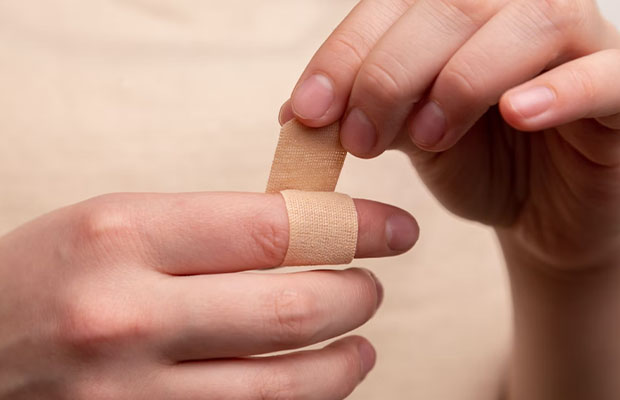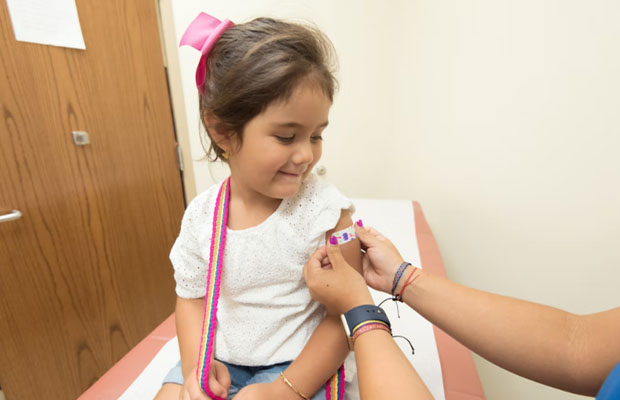Boo-boos often feel better for children of all ages when they are covered with a cute adhesive bandage. Everybody has, in fact, had to brace themselves before enduring the stinging pain of removing a bandage from their skin. It hurts, and what’s worse is that it leaves a residue that is equally uncomfortable.
Even if you act quickly, it can hurt kids to yank off a bandage that is inexplicably stuck. How to remove an adhesive bandage without pain?
Some advice includes removing it after a bath or gently massaging a small amount of baby oil onto the skin.
The good news is that this article contains additional easy tips to make taking off bandages a breeze. Let’s start!
Table of Contents
Easy Tips To Remove An Adhesive Bandage
In general, bandages need to be changed every day and can be taken off once a cut has developed a scab. Depending on the size and location of the wound, this could take one to several days.
Small cuts and scrapes that are less likely to get dirty, wet, or touched can frequently be discovered earlier than wounds that are larger and/or on more high-friction areas (like on hands or places where their clothes or shoes will rub on them), as well as wounds that are on other body parts.
If you’re unsure of when to change or remove your child’s bandage or if you have any worries about how their cut is healing, speak with your child’s doctor.
Here are five quick, painless methods for removing the bandage from your child. Be aware that the majority of these techniques—with the obvious exception of soaking in water—also apply to waterproof bandages.

Create A Tab For Better Control
If you choose to quickly rip it off, be sure to pull back one edge of the Band-Aid first. the skin of your child as you pull parallel. As a result, the adhesive will be induced to release rather than adhere to the skin.
Encourage your young one to take a deep breath before telling them that you will remove the bandage on the count of three to reduce their anxiety.
Adhesive Remover Wipes
Using remover wipes is one of the easiest and most efficient ways to get rid of adhesive smudges. Products for removing adhesive that are specifically made to get rid of bandage residue exist. Simply wipe the pad over the sticky area and, voila.
Remove The Bandage After A Bath
While the Band-Aid is still in place, bathing your child can help clean the area around it and make removal simpler. The bandage’s adhesive is weakened by water, which results in easier peeling off after getting out of the bath or falling off completely.
The bandage can also be dampened with a wet cloth as needed, for example, if it is on the upper body and not submerged in water or if you want to skip the bath and remove the bandage right away.
Weaken Adhesive With Oil
Put some baby oil on a cotton ball or cotton swab. If you don’t have any baby oil on hand, you can also use olive oil, petroleum jelly, or baby shampoo.
Next, gently rub it over the bandage until it comes off. Peeling up a corner of the bandage slowly will allow you to check if it is functioning.
As your child helps you “paint” the oil on the Band-Aid, add a little food coloring to the oil.
Dissolve Adhesive With Alcohol
The adhesive will gradually dissolve if you dab some rubbing alcohol on the bandage. To prevent the alcohol from drying out the skin, rinse the area after removing the bandage.
Nail Polish Remover
Try using nail polish remover as another resourceful method to get rid of bandage adhesive. Because it contains acetone, it is fantastic at removing glue and adhesives.
Use a cotton swab or Q-tip to apply it, and leave it in place on the sticky area for a short while. Try to remove it after a while.
Be aware that not all nail polish removers contain acetone, so read the label before using. Acetone is a solvent that is necessary to dissolve the bandage residue, so if it is missing, it won’t work.
Petroleum Jelly
When it comes to removing adhesive from the skin, petroleum jelly functions similarly to oils. Petroleum has the advantage of being thick, which makes it easier to stay on the skin for a longer period of time. After leaving it on for 5 to 10 minutes, wipe it off with a paper towel or cloth towel.
Soap And Water
The skin can become irritated when using chemicals like alcohol and acetone. Always wash the area with soap and water after using those kinds of products. It assists in completely removing the remaining residue and cleansing the skin of the chemicals.
Freeze Adhesive With Ice
Put a few ice cubes in a paper or thin towel and rub them gently over the Band-Aid. Ice functions by making the adhesive brittle, which then makes it simpler to peel off of your child’s skin.
How To Remove Left Adhesive From Skin?
Any adhesive that hasn’t been completely removed from your child’s skin can be removed with rubbing alcohol applied with a cotton ball. Adhesive removal products, mild soap and water, gentle moisturizers, and baby oil are additional ways to get rid of residue that remains on their skin after a bandage is removed.
To prevent any damage to the skin, be sure to remove any remaining adhesive with care.
What Are Signs Of An Adhesive Allergy?
If your child gets an itchy, red rash that resembles the shape of the adhesive bandage after wearing an adhesive bandage for a couple of days, they might be allergic to adhesives. This reaction is brought on by a contact dermatitis reaction to the adhesive. The next time you see your pediatrician, you might want to talk about this.
Patch testing, which involves applying various chemicals to the skin while holding them against it with paper tape, is used to diagnose adhesive allergy. Patch testing not only helps to confirm what is already believed to be the case based on a person’s symptoms, but it also helps to pinpoint the specific chemical that is responsible for contact dermatitis.
The Bottom Line
These methods for removing bandage adhesive work like a charm and should leave your skin feeling much better.
Check out our stock if you require adhesive remover or any other medical supplies. If you have any questions about removing the adhesive bandages, please leave your comment below.
Also Read: How To Make Cleaning Fun?
